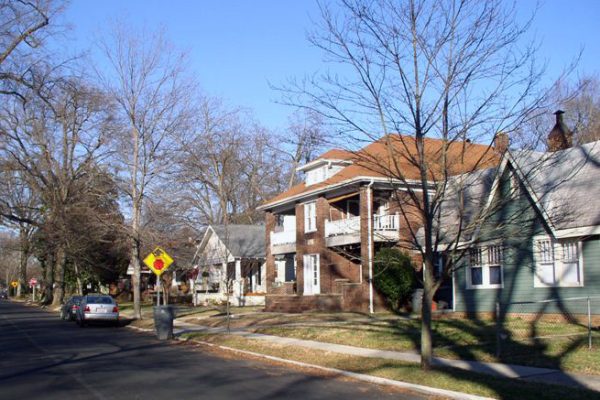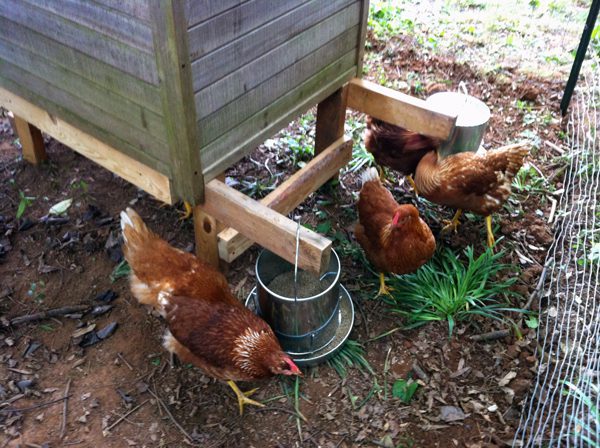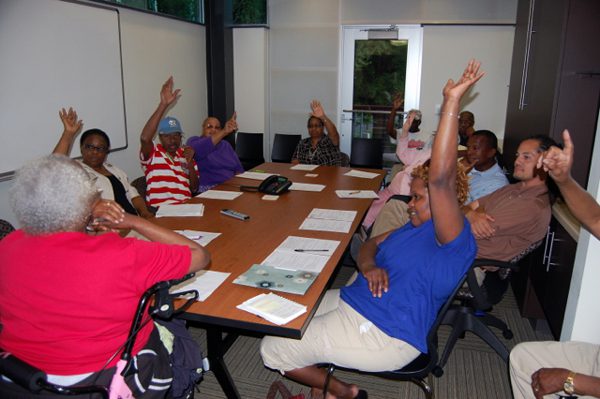Charlotte neighborhoods sow green vision

When Allen Nelson moved to Charlotte’s Commonwealth-Morningside neighborhood in 2007, he was drawn to the area’s bungalow-style homes, the graceful, mature shade trees and the tucked-away location so close to downtown.
But in Nelson’s view, Commonwealth has some of the same problems of many Charlotte neighborhoods – overflowing trash bins, energy-leaking older homes, a scattershot approach to recycling.
 Sharon Howard’s neighborhood, Revolution Park, also enjoys convenience to downtown, along with a solid supply of older housing stock. But the west side neighborhood suffers from unsightly vacant lots and boarded-up homes, and the lack of nearby grocery options.
Sharon Howard’s neighborhood, Revolution Park, also enjoys convenience to downtown, along with a solid supply of older housing stock. But the west side neighborhood suffers from unsightly vacant lots and boarded-up homes, and the lack of nearby grocery options.
Both neighborhoods, along with nine others in Charlotte, have drafted plans organizers say will chart a better – and more sustainable – course for the future. Neighborhood residents, led by the City of Charlotte’s Neighborhood and Business Services department and nonprofit group Sustain Charlotte, met earlier this year to talk about making the neighborhoods more livable for the long-term. The project was funded by the city and a grant from the regional Wells Fargo Foundation.
The effort to help neighborhoods become more sustainable grew out of “Power2 Live Green” grant that helps neighborhoods cut energy use, often by upgrading lighting or making homes more energy-efficient, says Nicole Storey, community energy conservation coordinator at the city. City staff expected seven neighborhoods to compete for the money and were surprised when 19 applied.
|
Neighborhoods with sustainable vision plans Click on each neighborhood to download a PDF of its plan: |
Eventually, 11 were chosen, neighborhoods as diverse as a condominium tower in Myers Park to suburban commuter areas to lower-income urban neighborhoods. To receive the funds – up to $10,000* per neighborhood – residents had to perform several tasks, one of which was to create the “sustainable vision plan.”
The goal was to see how neighborhoods “could challenge themselves to be better, think more broadly and be green,” Storey said.
Crafting a plan for a whole neighborhood wasn’t easy. For one, it involved a number of meetings, and refining ideas, building consensus and setting measurable targets. Many of the neighborhoods have a very diverse population, from young, green-minded professionals to elderly residents living on fixed incomes.
“There was some work and time involved,” said Nelson. But for all the neighborhoods, the process generated some pretty creative ideas, said Shannon Binns, founder of Sustain Charlotte, who helped facilitate the meetings. Graham Heights neighbors decided they want a community garden they eventually can grow into a full-blown farmers’ market. Myers Park’s Queens Tower community wants more residents to recycle and plans to offer a hazardous materials box for CFL bulbs. Residents in south Charlotte’s Park Crossing development decided to revise homeowners’ association covenants to promote greener practices.
“There were two things that arose a lot,” Binns said. “A lot of the neighborhoods had a goal around food. They wanted either some sort of farmers’ market or grocery store or community garden. Another area was energy. People understand that reducing energy use in their home reduces their utility bills. They were very interested in finding ways to do that.”
 Revolution Park residents chose as their first priority to “improve existing homes and reduce the number of abandoned homes,” which Howard acknowledged is a challenging goal.
Revolution Park residents chose as their first priority to “improve existing homes and reduce the number of abandoned homes,” which Howard acknowledged is a challenging goal.
“We do have some slumlords,” she said, and boarded-up homes are “hurting our community.” Howard said help will be sought from the city council for dealing with absentee landlords, and the neighborhood also plans cleanup days. Revolution Park’s second goal was to increase access to healthy, local food.
“We essentially live in a food desert,” Howard said. More activity is needed at the neighborhood’s community garden, she noted, but the idea that got residents the most excited was a Saturday rideshare out to the Charlotte Regional Farmers’ Market, something the Revolution Park neighbors have in the works.
Commonwealth’s top goal is to reduce the amount of waste sent to landfills, followed by a goal to shrink water consumption and one to boost participation in community-supported agriculture arrangements.
Communicating with Commonwealth residents about changes they can make to save water and energy – such as installing low-flow toilets – will take time. Nelson said he and his wife, Amy Hawn Nelson,* remodeled their 1940s bungalow to make it more energy-efficient, while keeping the footprint small. It’s not always an easy sell to get people involved in making green choices, but, he noted, “when you have some money to give away, that gets people’s attention.” The neighborhood’s energy grant helped pay for energy-efficient improvements to a number of homes.
The plans will help the neighborhoods chart a course, but “we can’t take a magic wand and make every neighborhood green,” said Storey. Still, she said, residents who want to move their neighborhoods toward greater sustainability are being empowered to do so, not only because they’ve set goals, but also because the city has helped connect them with resources in the community to achieve them.
Howard said she is looking forward to change. She and her husband, John, the neighborhood association president, raised two daughters in Revolution Park and she says the residents are a tight-knit bunch. She said she’s “absolutely hopeful” that together, they can create a more sustainable place to live.
*Editor’s Note: Amy Hawn Nelson works at the UNC Charlotte Urban Institute as the director of the Institute for Social Capital.
* Corrected. An earlier version of the article, using incorrect information given to the reporter, said grants were up to $7,000.